If you’re about to buy a carpet you’ve probably asked yourself what material you should choose. You came to the right place! In this post, we’ll talk about every carpet material that there is. This is the most comprehensive online guide on carpet fiber materials.
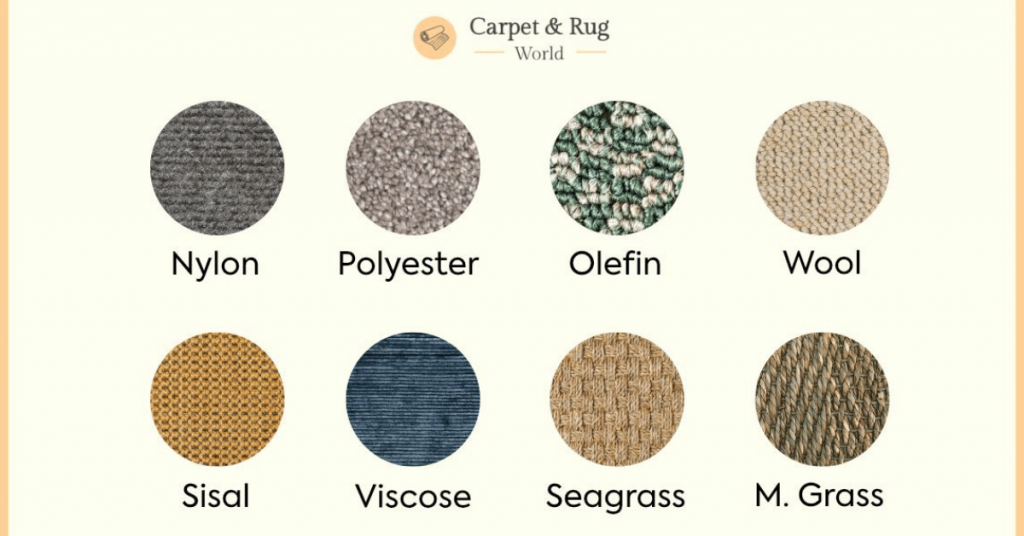
But before we begin, let me start by saying that if you’re about to buy a carpet this post will help. But it’s not the only post that you should be reading. You also have to decide the carpet style, the carpet padding, carpet pile, carpet tuft, etc. All of these things determine a carpet’s quality.
If you want to get it right the first time, here are a couple of posts that I think might also be helpful:
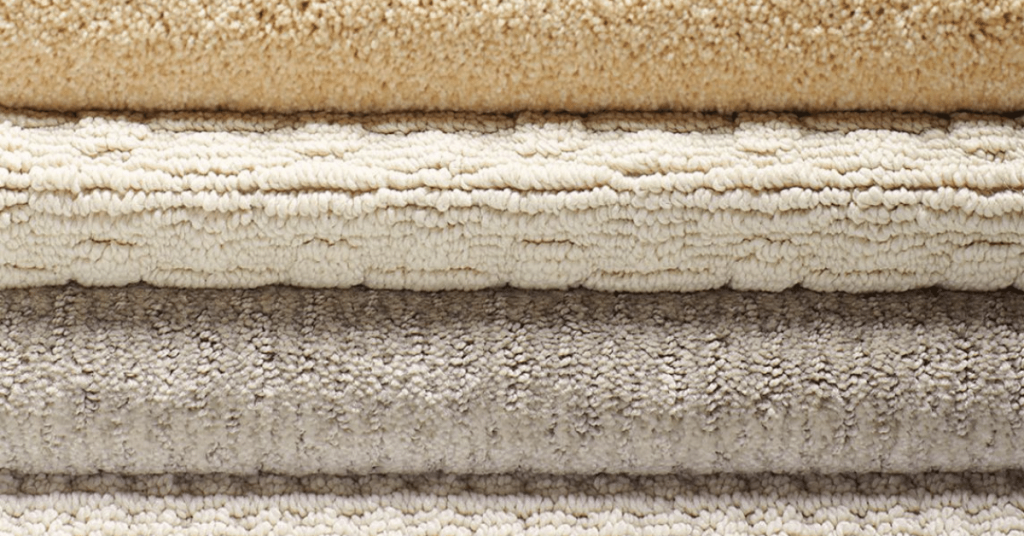
The Most Comprehensive Guide to All Types of Carpets!
A comprehensive look into the world of carpets. The different styles categorised on the basis of material, construction, and pile height, their advantages and limitations.
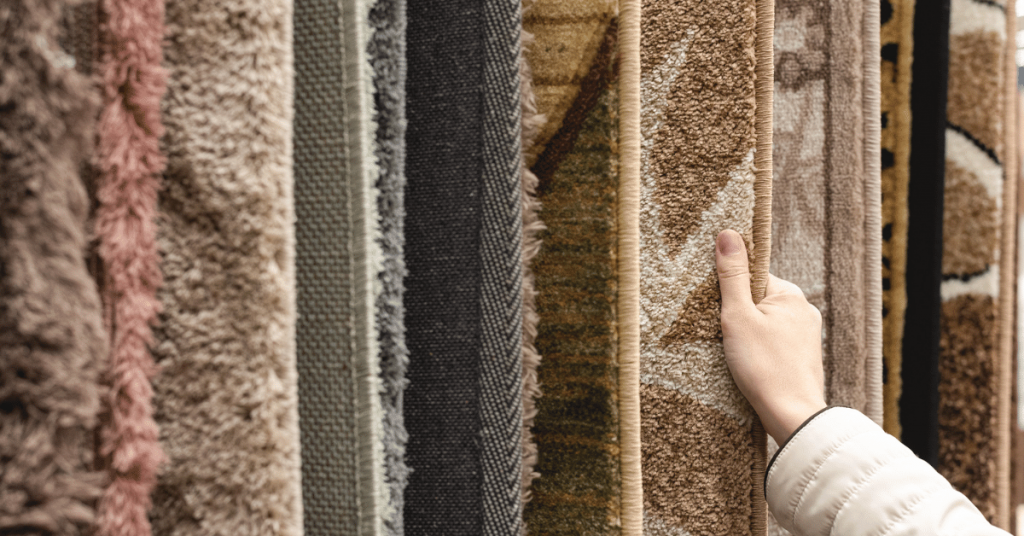
Carpet Padding Buying Guide: Everything in 1 HUGE Guide.
Padding is a huge part of buying a carpet. But it’s not easy to understand and many salespeople make it hard on purpose. This Ultimate Guide covers everything you need to make a buying decision.

What is Carpet Pile and Why Should You Care?
Carpet Pile and its height can be very important when it comes to buying a carpet. Learn about the different types and heights in this Ultimate Guide!
Now that you know that those posts exist, it’s time to talk about carpet material or carpet fibers. And it’s a very important topic because the material that you choose will be one of the factors that influence how long your new carpet lasts.
USEFUL TIP
THE MOST DURABLE OPTION ISN’T ALWAYS THE “BEST” OPTION FOR YOU
I know this might be obvious, but I get asked all the time something similar to “What carpet should I buy?”. And the answer isn’t easy because it depends on what you want the carpet for and your budget. I wouldn’t recommend the same carpet to someone renting an apartment than to someone moving into a brand new home. Makes sense, right? Let’s keep moving then!
The carpet fiber materials we’ll be talking about are 1. Nylon (Nylon type 6, Nylon Stain Master and Soft Nylons included), 2. Polyester (including polyester blend), 3. Polypropylene (a.k.a Olefin), 4. Wool, 5. Sisal, 6. Viscose, 7. Seagrass and 8. Mountain Grass.
The first 4 are the most common types, although the last 4 are also available and are increasingly popular because they are very sustainable options.
CAUTION!
BEWARE OF “NEW” FIBERS
If you’ve been to a carpet shop and a salesperson has told you about a super new fiber with a cool new name, it’s probably an old fiber sold as new. I’m not saying that technology isn’t improving and that mills aren’t making better fibers these days. I’m just saying that if the base for a carpet is nylon, it will behave pretty much like nylon. And if the base is wool, it will behave pretty much like wool. Fiber innovations aren’t that determinant. And if I happen to find a new fiber that truly behaves like a new fiber, I’ll add it to this guide immediately.
BTW, I have a post on where is the best place to buy a carpet. Check it out here.
Most common fibers
1. Nylon
It was invented in 1935, and it has been considered the most durable and resilient of all carpet fibers ever since it was first introduced as a carpet fiber in the 1950s. By resilient, I mean that it goes back to its original position after being put under pressure.
Nylon carpets look like new way longer than any other fiber material, but it’s also very expensive. Not as expensive as wool, but it’s a close second.
Nylon is a synthetic material, and that means that it can be easily manipulated by the mills to bring clients any color or style they want (loop, cut pile, Saxony, etc). I always recommend Nylon if you have a lot of foot traffic and you don’t want to change your carpet it a long time.
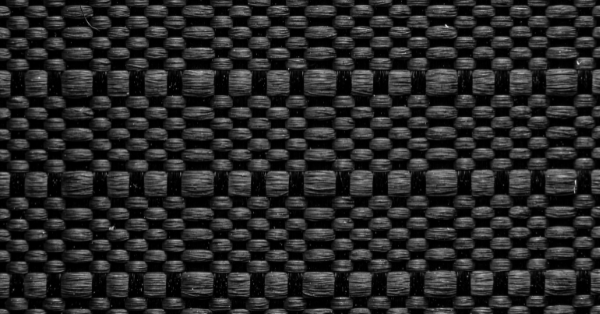
That being said, it’s not all butterflies and rainbows with nylon. Nylon is absorbent, and that means that it’s prone to get stained if you spill anything on your carpet. But there’s a way around this problem! When you’re going to buy your carpet ask for dyed nylon. What I mean by “dyed nylon” is a nylon that has been dyed in production (as opposed to nylon that has been dyed after it was manufactured). That alone makes a huge difference!
CAUTION!
NOT ALL NYLON CARPETS ARE CREATED EQUAL
Carpet Stores and manufacturers are aware that Nylon is very popular among homeowners because of how durable it is. Since it’s very well known, they sell low quality nylons to uninformed clients claiming that since Nylon is the best carpet fiber, that carpet is high quality. That’s simply not true! Carpet quality doesn’t depend just on the carpet’s fiber. There are many low-quality nylon carpets out there. That’s why you have to check other carpet specifications such as Pile height, Face-weight, Carpet Tuft, etc.
Now that you know how nylon behaves as a carpet fiber overall, it’s time to talk about the different types of nylons
Types of Nylon: Nylon 6 and 6,6.
The most popular Nylon brands that are available today 2022 are Nylon 6 and Nylon 6,6 (a.k.a. Stainmaster). They’re both made by a company called Antron. Nylon 6 is extremely popular because of how well it performs. It’s been an industry leader for years!
They’re both very similar, but Nylon 6,6 is a little bit more expensive. Some people like nylon 6 better, some people like nylon 6,6. I honestly think that they’re both great and that 98% of homeowners won’t be able to tell the difference. Buy the Nylon 6,6 if you get a great deal, but you can’t go wrong with either option.
Soft Nylons
Besides Nylon 6 and Stainmaster (nylon 6,6), we also find other nylon-based fibers like Tactesse, Caress Lisse, etc. We could group these brands as “Soft Nylons” because manufacturers have tried to make them softer than Nylon 6 and Nylon 6,6.
They achieve this by reducing the fiber denier. And what exactly is fiber denier? It’s just a fancy way of saying how thick the fiber is. Because the soft nylons are thinner, they feel softer to the touch.
I honestly think that Soft Nylon isn’t worth it. For a couple of reasons. First, because it’s not as durable nor resilient as regular nylon. And second, because manufacturers put a lot of money into selling these “new” fibers. And because of that reason, they’re usually more expensive. I just don’t see when someone would want to buy these fibers compared to other options
2. Polypropylene (a.k.a. Olefin)
Polypropylene (or Olefin) is also a synthetic fiber and it’s the second most sold carpet fiber today. It’s very strong -although not as strong as nylon- but way cheaper than nylon. However, it’s not the best option depending on the room.
Olefin is highly stain-resistant, but not soil-resistant. As a matter of fact, quite the opposite. When the carpet is dirty, it looks like it’s very dirty! That’s why it’s not used in high-traffic areas usually.
It’s very commonly used to make Berber carpets or commercial carpets. Even outdoors grass carpets!
DID YOU KNOW?
Olefin is very popular for handicapped areas because -when it’s installed without padding- wheelchairs roll very easily.
3. Polyester
Polyester is a fabric that was invented in the 1940s and became very popular in clothing very fast. Don’t be fooled by the name! Polyester is just a type of plastic.
The best thing about Polyester is that it’s a non-allergic fiber and that it can hold very vivid and vibrant colors. And since it’s plastic, more and more brands are selling eco-friendly (recycled) polyester. Which is great, because we have to take care of our planet.
And it’s very inexpensive! It’s probably the least expensive of all the options on this list.
But that’s all the good things that can be said about polyester. As a carpet fiber, it’s actually terrible. It’s not a resilient fiber, and that means that your carpet will not last as long because when the fibers are crushed, they simply don’t come back up again. Period.
I would only recommend a polyester carpet if you don’t want it to last and want to save as much money as possible. Say for example that you’re renting an apartment for 5 years and then you’ll go live there yourself. This carpet could work just fine.
But know that it’s unlikely that any polyester carpet lasts more than 5 years. Not even the ones that are a blend between nylon and polyester.
CAUTION!
CHECK THE CARPET’S WARRANTY
If you decide that you want to buy a Polyester Carpet, make sure that you check the warranty before you do. Most Polyester carpets aren’t covered against crushing. And not having a warranty can be a deal-breaker for a lot of people. But the thing is… these carpets don’t have a warranty because they do get crushed. A lot.
4. Wool (natural)
We’ve now entered the realm of natural fibers. And we’re starting with the most expensive fiber carpet (except for other natural and very rare fibers). It’s not just super popular for rugs! It’s a great option for carpets too!
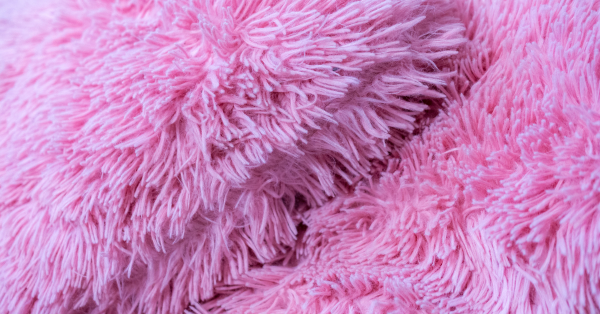
Wool comes from sheep and it’s very eco-friendly. Wool carpets are considered to be a luxury carpet because of how soft they are (and how expensive they are too!). They last quite a lot too (although not as long as nylon) and their color very rarely is lost throughout the years.
Wool carpets are also very insulating, which makes them great for extreme climates and are also known for being fire resistant. They’re 100% natural, which is why they’re great for allergic people.
Such great qualities come at a price though. It can be twice as expensive as other synthetic fibers. So get your wallet ready! And not just for when you purchase your carpet. Cleaning wool carpets is usually more expensive. And if they’re overwet, carpet buckling can happen easily (check our guide on How to Remove Carpet Buckling if your carpet has wrinkles)
But they have other issues besides the price. These carpets are susceptible to being attacked by mold, mildew or carpet beetles (we wrote a long guide about Carpet Beetles: All You Need To Know in case you’re interested).
They’re also not the best option if you have pets or small children. The reason is that although these carpets are quite stain-resistant if you don’t clean a stain right away it’s more likely that it will stay forever than the synthetic carpets.
CAUTION!
THERE ARE MANY TYPES OF WOOL CARPETS
Because some manufacturers know that wool is perceived as an expensive carpet fiber, they’re selling low-quality wool that’s very easy to stain. That’s why the price range in wool carpets could be so big. Avoid the low-cost wool carpets or you won’t have any of the benefits that wool has.
PRO TIP
20% NYLON – 80% WOOL BLEND IS A GREAT OPTION
I found that the combination of nylon and wool is extremely satisfying. And the 20% nylon and 80% wool combination is something that you should really consider.
Less common fibers
5. Sisal (natural)
The second natural fiber we’re going to be looking at is Sisal. It originated in Brazil and it comes from a plant called Agave (a.k.a. Sisalana, hence the name Sisal).
Sisal has been used for centuries to make ropes for boats, but it hasn’t been until recently that we’ve started using it as a carpet fiber.
Today it’s one of the most popular natural fibers because it lasts a long time. And it looks great! I mean, look at the pictures! It has an earthish color that says “I’m natural, beautiful and sophisticated”.
What I like the most about Sisal is how low maintenance it is. If you own a good powerful vacuum, it should be enough to take care of it. BTW, if you’re on the market for a vacuum cleaner we have a guide you might be interested in:

The Best 5 Vacuum Cleaners That Are a Proven Success!
Are you searching for the perfect vacuum cleaner? In this guide, we review the best overall, the best for allergies, the best for deep cleaning, the best for everyday use, and the best robot.
But Sisal has its cons too. It’s an incredibly absorbent material, which means that it will soak up moisture and keep your home humid and cool. So much in fact that it can become slippery. And because it’s so absorbent, you have to clean the stains right away (which is actually quite easy to do), or they could stay forever.
6. Viscose
Viscose is a synthetic fiber that has a super interesting history. It was first discovered in the late 19th century and was marketed as an alternative to silk.
I didn’t want to include Viscose at first in this guide because it’s very rarely used as a carpet fiber by itself. It’s usually blended with a stronger material.
I’m sure you know what Viscose is because it’s quite popular for clothing too. It’s super soft and feels luxurious. It feels like it’s unique and draws many eyes to it. But it’s actually super inexpensive! If you’re on a budget and are looking for something that feels expensive, this might be it.
But at the end of the day… you get what you’re paying for. It’s not a very strong, nor durable fiber. So don’t use it for high-traffic areas! Unless you buy a viscose blend. But even then, it’s not going to be very durable.
IT’S NOT ECO-FRIENDLY
Many people think that it’s eco-friendly because Viscose is built from cotton (most of the time). But the chemical process that happens isn’t eco-friendly at all. I just thought you should know that.
7. Seagrass (natural)
This is the third eco-friendly solution of the guide. As the name indicates, it’s made from grass. And it actually looks a little bit like grass. The grass is dried and woven together to create the fibers.
It’s considered to be the high-traffic natural alternative because of how durable it is and how easy it is to clean stains from it. Simply blot every stain and you’re good to go. It’s really that simple.
However, because it’s grass we’re talking about it doesn’t deal well with humid environments. The color range isn’t spectacular either: brownish-yellowish-greenish tones are all the colors you’ll ever find.
8. Mountain Grass (natural)
We placed it right after the Seagrass because of how much they look alike. The only difference is that the plant from which seagrass carpets are built grows underwater. And the mountain grass comes from a plant that grows in the mountains.
That’s seriously the only difference. All the pros and cons of one, apply to the other.
9. Jute (natural)
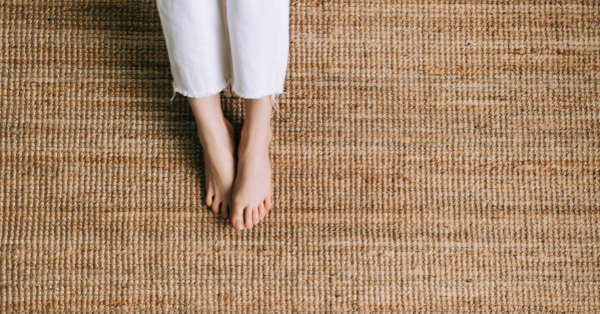
I left Jute for last because of sentimental reasons. My first carpet when I was a kid was a jute rug! Still today I work on a daily basis with hemp (which is one of the materials with which jute carpets are made).
I won’t bore you too much with details about jute rugs because it’s a very uncommon type of carpet.
It’s becoming increasingly popular because it has a very bohemian look to it and fits great with neutral colors (like the ones you would find on a beach house). It has a rustic touch to it and it’s very easy to clean any stain by just blotting it out.
The worst thing about jute rugs is how absorbent they are. In humid environments they can be easily attacked by mold. And that’s not a good thing considering that your feet are right above it. And if it’s hit by direct sunlight it will lose color.
Conclusion
And that’s it! 9 types of fibers so that you can consider which one is best for you. I really hope that you liked our guide!
